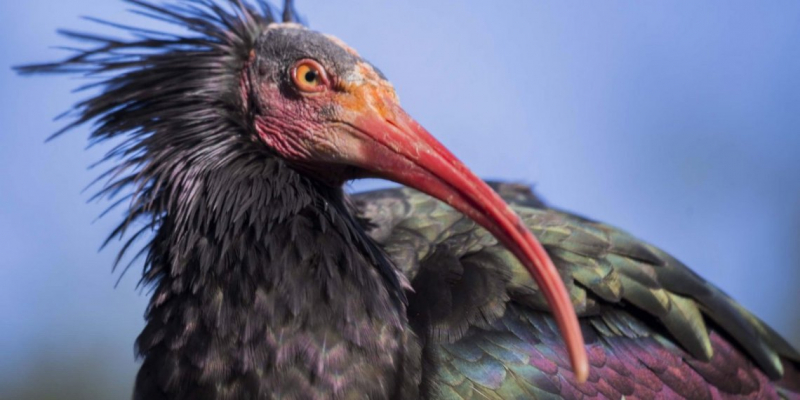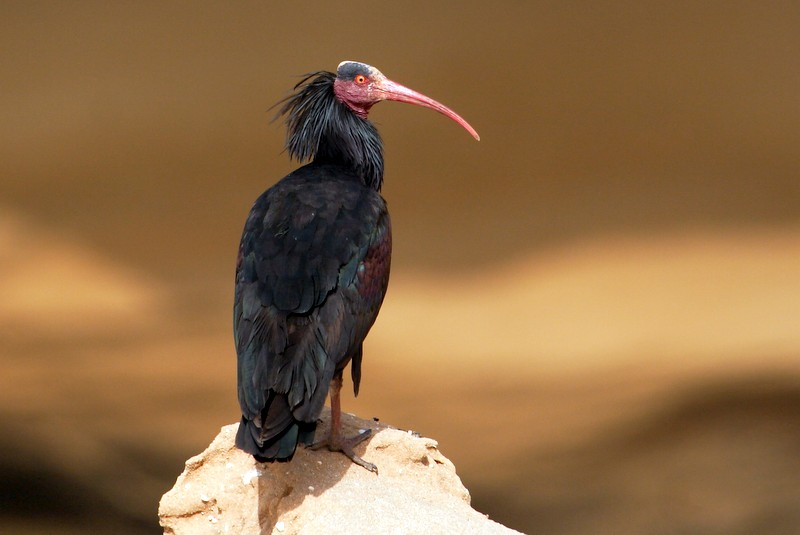Northern Bald Ibis

The Northern Bald Ibis is one of the rarest birds in the world, it has only about 250 mature individuals remaining in the wild. The Northern Bald Ibis has always been considered critically endangered, but thanks to successful conservation efforts over recent years have helped downgrade the species status to endangered. The reasons for the species' long-term decline are unclear, but hunting, loss of foraging habitat, and pesticide poisoning have been implicated in the rapid loss of colonies in recent decades. Currently, there are over 1,000 Northern Bald Ibises in captivity, in a semi-wild colony in Turkey, and locations in Austria, Italy, Spain, and northern Morocco.
The northern bald ibis, hermit ibis, or waldrapp is a migratory bird found in barren, semi-desert, or rocky habitats, often close to running water. This 70–80 cm, glossy black ibis, which, unlike many members of the ibis family, is non-wading, has an unfeathered red face and head, and a long, curved red bill. It breeds colonially on coastal or mountain cliff ledges, where it typically lays two to three eggs in a stick nest and feeds on lizards, insects, and other small animals. The Northern Bald Ibis has been regionally extinct in Europe for over 500 years, but breeding and conservation programs have brought it back.
Location: Southern Morocco and Syria; previously also found throughout Europe, North Africa, and other parts of the Middle East
Estimated Number of Mature Individuals: less than 250 in the wild; over 1,000 in captivity
Current Conservation Status: Endangered
Scientific Name: Geronticus eremita











